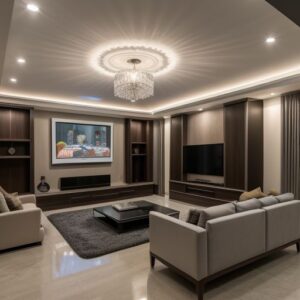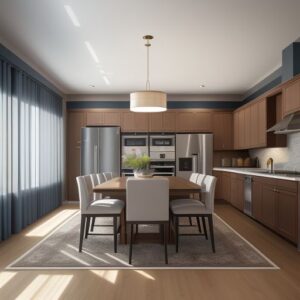Top Trends in Residential Interior Design: Elevate Your Home's Aesthetic
Residential Interior Design
Residential interior design has evolved significantly over the years, reflecting changes in lifestyle and aesthetics. Homeowners are increasingly focusing on creating spaces that are both beautiful and functional. Here are some top trends in residential interior design that can help elevate your home’s aesthetic.
Embracing Sustainability
Sustainability has become a major focus in interior design. Homeowners are opting for eco-friendly materials and energy-efficient appliances. Moreover, repurposed furniture and recycled decor elements are gaining popularity. This trend not only reduces environmental impact but also adds a unique, personal touch to the home. Furthermore, the use of natural materials such as wood, stone, and bamboo enhances the organic feel of the space. Incorporating plants into the design is another way to promote sustainability and improve indoor air quality.
Minimalist Approach
The minimalist approach continues to dominate residential interior design. This style emphasizes simplicity, functionality, and a clutter-free environment. Neutral color palettes, clean lines, and open spaces define this trend. Additionally, multifunctional furniture pieces are favored to maximize space and utility. The minimalist approach creates a serene and organized atmosphere, making the home feel more spacious and inviting. However, it is essential to strike a balance to avoid making the space feel too stark or cold.
Smart Home Integration
Smart home technology is becoming increasingly integrated into residential interior design. Homeowners are investing in smart lighting, thermostats, and security systems. These devices offer convenience and energy efficiency. Moreover, smart home technology can be seamlessly incorporated into the design, ensuring that it complements the overall aesthetic. Voice-controlled assistants, automated blinds, and smart appliances are also gaining popularity. This trend reflects the growing desire for homes that are not only stylish but also tech-savvy and efficient.
Biophilic Design
Biophilic design is another trend gaining traction in residential interior design. This approach emphasizes the connection between indoor spaces and nature. Large windows, indoor gardens, and natural light are key elements of biophilic design. Furthermore, natural materials and earthy color palettes enhance this connection. This trend promotes well-being and creates a calming environment. Incorporating water features, such as indoor fountains, can also enhance the biophilic feel.
Bold Colors and Patterns
Bold colors and patterns are making a comeback in residential interior design. Homeowners are moving away from neutral tones and embracing vibrant hues. Statement walls, colorful furnishings, and patterned textiles are popular choices. This trend allows for greater self-expression and creativity in home decor. However, it is important to balance bold elements with more subdued tones to avoid overwhelming the space. Mixing and matching different patterns and textures can also add depth and interest to the design.
Multi-Functional Spaces
The need for multi-functional spaces has grown, especially with the increase in remote work. Residential interior design is adapting to this trend by creating versatile areas that serve multiple purposes. Home offices, workout areas, and guest rooms are being integrated into existing spaces. This trend emphasizes the importance of flexibility and adaptability in home design. Moreover, using furniture that can be easily reconfigured or moved helps to create dynamic, functional spaces.
Vintage and Retro Styles
Vintage and retro styles are being revived in residential interior design. These styles bring a sense of nostalgia and charm to the home. Mid-century modern furniture, retro color schemes, and vintage decor pieces are popular choices. This trend allows homeowners to blend old and new elements, creating a unique and eclectic look. Additionally, sourcing vintage items can be more sustainable and add character to the design.
Conclusion
In conclusion, residential interior design is constantly evolving, with new trends emerging regularly. Embracing sustainability, minimalism, and smart home technology can significantly enhance your home’s aesthetic. Additionally, incorporating biophilic design, bold colors, and multi-functional spaces can create a dynamic and inviting environment. Vintage and retro styles add a touch of nostalgia and personality to the decor. By staying updated with these trends, you can elevate your home’s design and create a space that reflects your style and needs.



















